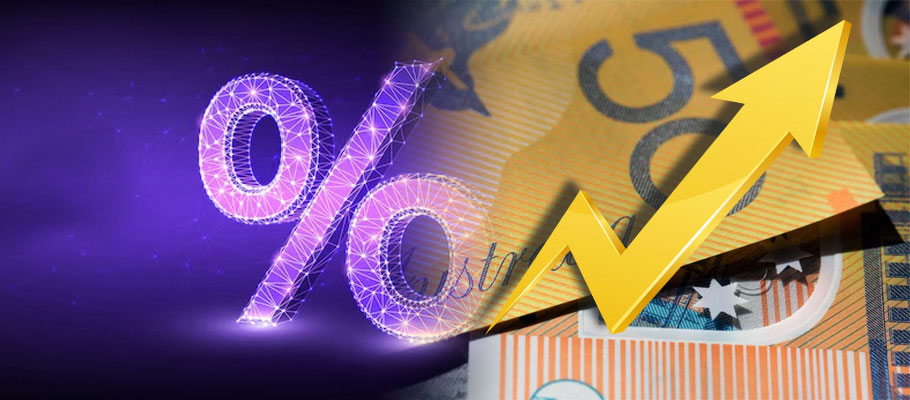
Published: June 5th, 2024
With a nudge from the Reserve Bank of Australia (RBA), the Australian Dollar could return to highs last seen in June 2023. Analysts are betting that central bankers in Sydney will raise interest rates again to cool inflation, though a downward turn in global investor sentiment could yet scuttle significant AUD gains.
Is inflation on the up Down Under? Some analysts are saying yes after an inflation print landed this week on the wrong side of consensus, coming in at 3.6 per cent year-on-year. For AUD bulls, however, those figures offer support.
An analysis by Westpac said the central bank must play Hamlet in June. ‘To hike or not to hike? That is the question for RBA policymakers after a hotter-than-expected set of inflation figures arrived on Monday. AUD bulls are now straining to hear the answer.’
Westpac believes another rate rise will act as a trigger for forex traders closely observing AUD and NZD.
Australian CPI rose unexpectedly to 3.6 per cent in April (YoY), its highest level for six months. Economists were looking for a decline to 3.4 per cent.
An analyst note from Crédit Agricole’s FX strategy unit said digging into the CPI report’s details show core inflation is the issue. If items with volatile pricing are excluded, inflations looks stable at 3.5 per cent year on year.
The bank is looking, however, for signs of upward pressure on monthly inflation figures over the next few months when prices for professional services are expected to swell.
Minutes from the last RBA meeting revealed that the bank’s policy committee believed a rate rise might be in the offing if inflation forecasts turn out to be overly optimistic.
'If the RBA delivers a rate rise at its mid-June meeting or signals strongly that a Q3 rise is possible, it might send AUD/USD back up to 0.69, its June 2023 high.’
At this time last year, the Australian Dollar was on the back foot against G10 peers as worries about China's property sector spilled over into currency markets. Real estate stocks had weighed on Chinese economic underperformance for the previous eight months, leading to bouts of AUD weakness.
A report by Bloomberg said that Chinese property stocks had fallen to their worst valuations in eight months as worry about a possible liquidation of the country’s giant Evergrande Group pointed to stress across the sector.
Evergrande, a China's largest property developer, saw its stock sink by 25 per cent after it called off meetings with major creditors at the last minute and announced its debt restructuring plan needed to be re-visited.
The biggest stock market casualty, however, was China Aoyuan Group, which sank by a record 75 per cent when markets resumed trading on Tuesday.
Growth in China’s property market is a core driver of demand for iron ore and other construction-related raw materials, essential exports for commodity-reliant Australia.
Analysts at Westpac’s forex strategy unit wrote that China’s tepid growth and investor worries over the property sector were putting pressure on AUD. 'We expect to see occasional rallies at times but the trend into October will likely remain on the down.’
Westpac said investor sentiment with regards to China would be the core driver of AUD valuations in Q2 2023, given a relatively quiet domestic news cycle Down Under.
Earlier in March 2023, AUD was under pressure when the Reserve Bank of Australia (RBA) signaled that its cycle of interest rate rises might be drawing to a close. Data from China was also influential, spooking traders with news that Chinese imports had fallen year-on-year by more than 10 per cent.
Central bankers raised interest rates by the 25 basis points traders were anticipating, however the text of the announcement suggested the RBA was giving itself wiggle room to shutter its current hiking cycle.
In the aftermath of the announcement, AUD dropped to the bottom of the G10 performance list. An analyst note from RBC Capital Markets FX Strategy Unit said that the Aussie wasn't being helped by soft Chinese import figures and an apparent hotting up in diplomatic tensions between Washington and Beijing.
The RBA also cut a previous reference to ‘additional interest rate rises’ and replaced it with the phrase ‘further tightening’.
RBC analysts said the change provided more space for monetary policy maneuver, including restricting rises to just one more hike.
'We read the RBA’s most recent interest rate statement as unequivocally dovish.’ Major AUD pairs were quick to respond, with the Pound to Australian Dollar rate rallying over half a per centage point to reach 1.7949.
‘We are looking now for the RBA to pause its tightening cycle,’ RBC’s note added. ‘For that reason we think AUD/GBP will fall below our forecast of 0.59 by the end of the current quarter.’ AUD/USD, meanwhile, dipped a quarter of a per cent lower to touch 0.6712.
At time of the RBA announcement, the Aussie was down against almost all of its G10 peers across 24-hour, seven day, and 30-day timeframes.
A year earlier in March 2022 AUD found itself up against the Euro, Dollar, and British Pound as forex traders reacted to signals that an interest rate by the Reserve Bank of Australia may be in the offing.
Minutes from the RBA's February 2022 policy meeting suggested interest rates could rise as quickly as mid-April, far earlier than the central bank had been signaling since the start of this year.
In fact, RBA Governor Phil Lowe told Bloomberg in January 2022 that the bank was ‘being patient’ on interest rates ‘in a way that markets with much higher rates of inflation simply (couldn’t).’
After that, inflation Down Under rose steadily and RBA policymakers got the jitters. The bank’s February minutes said yearly core inflation in the first quarter of 2022 would likely exceed its top target of two to three per cent.